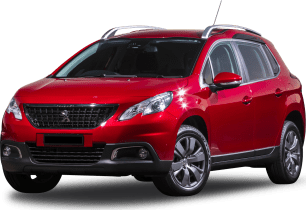While the final Australian specifications may not be locked in just yet, Ford did provide us with a comprehensive drive experience in the Mustang Dark Horse.
We spent three days with this new model, driving it across a variety of conditions including urban roads, highway stretches, winding country roads and even at the Charlotte Motor Speedway.
Across all conditions the Dark Horse demonstrated a more refined driving experience than the model it replaces. The sixth-generation was the first Mustang designed for the global market, rather than focusing on the USA, and that meant it couldn't quite match its more worldly rivals.
But Ford has clearly worked to make strides on that front, including adding the Dark Horse to the Mustang range to launch with a definitive flagship model.
The engine may be carried over rather than all-new but you won't care when you put your foot down. The roar from the V8 is truly a thing of beauty to anyone who appreciates an evocative exhaust note.
It's a deep, guttural growl at low revs and builds to a more high-pitched scream as it approaches its 7300rpm redline.
It packs a punch, too, with enough grunt to shove you back in your seat and had no trouble hitting 205km/h just halfway down the back straight at the Charlotte Motor Speedway circuit.
It's a joy to drive with the six-speed Tremec 'box, especially on the track as it has both the rev matching for downshifts and the flat shifting for upshifts, which make you feel like a racing pro.
The flat shifting does take some getting used to and requires a lot of faith the first time you try it, as you need to have more than 90 per cent throttle and more than 5000rpm to make the system work correctly and not crunch the cogs. But when you get it right it just feels so good.
Even without that, on the road it's a nice gearbox to use, with a short, mechanical throw. It may feel a bit heavy for some, but it's in keeping with the muscular attitude of the Mustang.
It also feels really well matched to the engine, on the track but also the road. The engine has enough torque to take-off in second (and probably third) gear, feels nicely spaced through the middle gears and will cruise along in sixth gear in a relaxed manner.
The automatic is a nice alternative if you really don't want a manual, but the 10 speeds feel like overkill at times.
It has a preference for looking for the tallest gear possible at any stage in order to save fuel. This included on the racetrack, where it felt like it still wanted to go to the highest gear it could if you left it to its own devices.
Using the steering wheel-mounted paddle shifters is the better choice when you want to go for a spirited drive, but it just doesn't feel as engaging or shift as crisply as the manual.
As for the handling, on the road the Dark Horse is a pleasure to drive, with a new level of poise and directness than even the Mach 1 possessed. The steering is excellent, with a directness to it that makes the Mustang feel responsive to your inputs.
It helps that the Dark Horse rides on Pirelli tyres developed specifically for it, which provide excellent grip on the road and add to that feeling of responsiveness and composure.
However, if you want to take that to the next level, then you'll need to speak to Herrod Performance about adding the Handling Package options.
However, it's not clear at this stage if that will include the amazing Pirelli P Zero Trofeo RS tyres that are used in the USA. At this stage they're not approved for use in Australia, which is a shame because they provide immense grip and, once again, elevate the Dark Horse above any Mustang we've had so far.
The changes to the aerodynamics and suspension, along with the tyres, combine to make the Mustang Dark Horse with the Handling Package a genuine rival to the likes of the BMW M4 and Audi RS5 Coupe, in this reviewer's opinion. We'll stop short of saying it's clearly better, but it's definitely a rival on performance terms.
The other notable new addition to this generation Mustang in a nod to the younger audience is the addition of the 'drift brake' that allows you to slide the back of the car around.
Working like a rally car handbrake, the drift brake only needs you to dip the clutch and pull up on the lever/bar and the back wheels lock up and allow you to slide. It's a fun new addition that does add a new dimension to a car that was previously focused on straight line performance at the drag strip.






